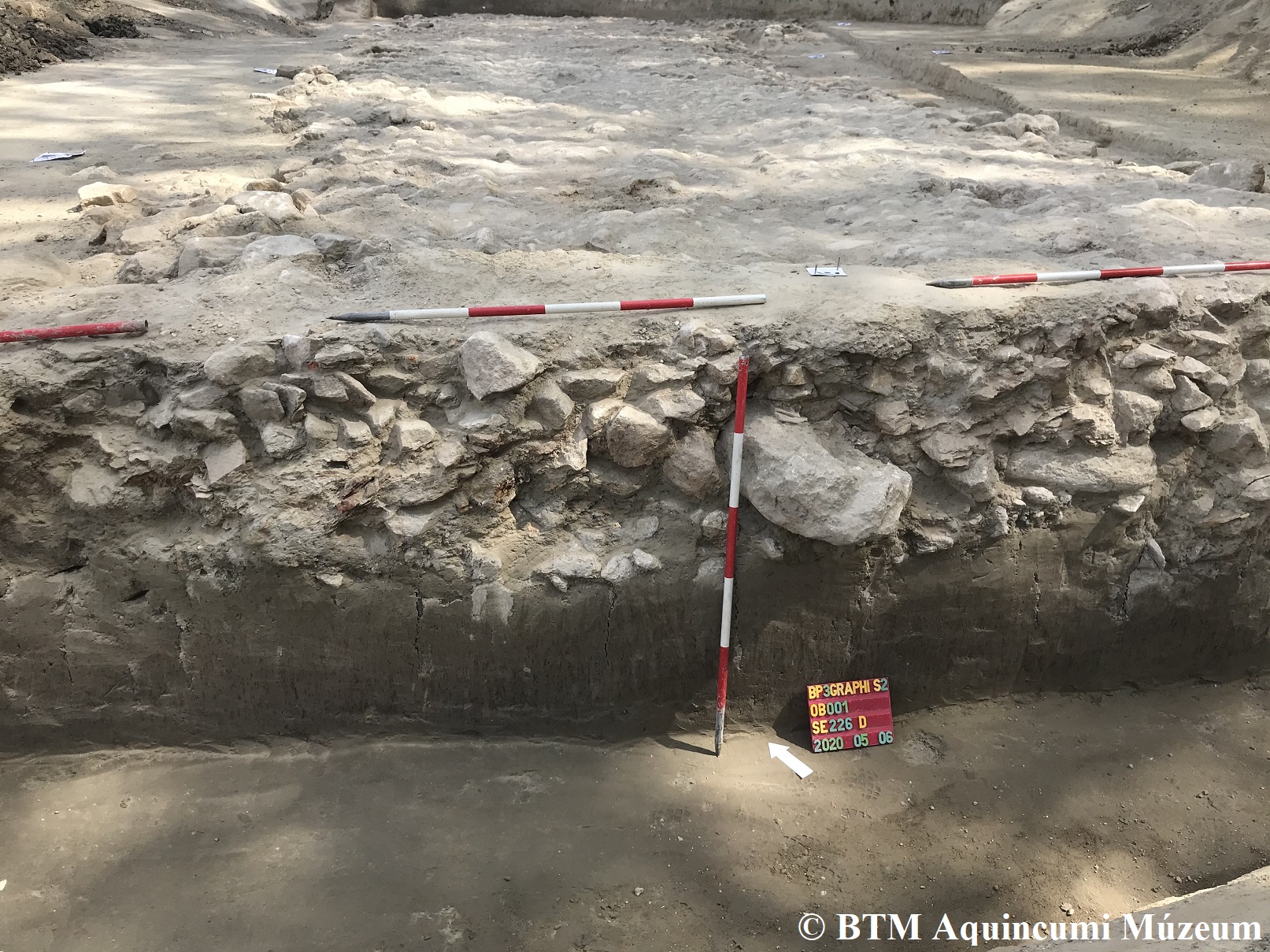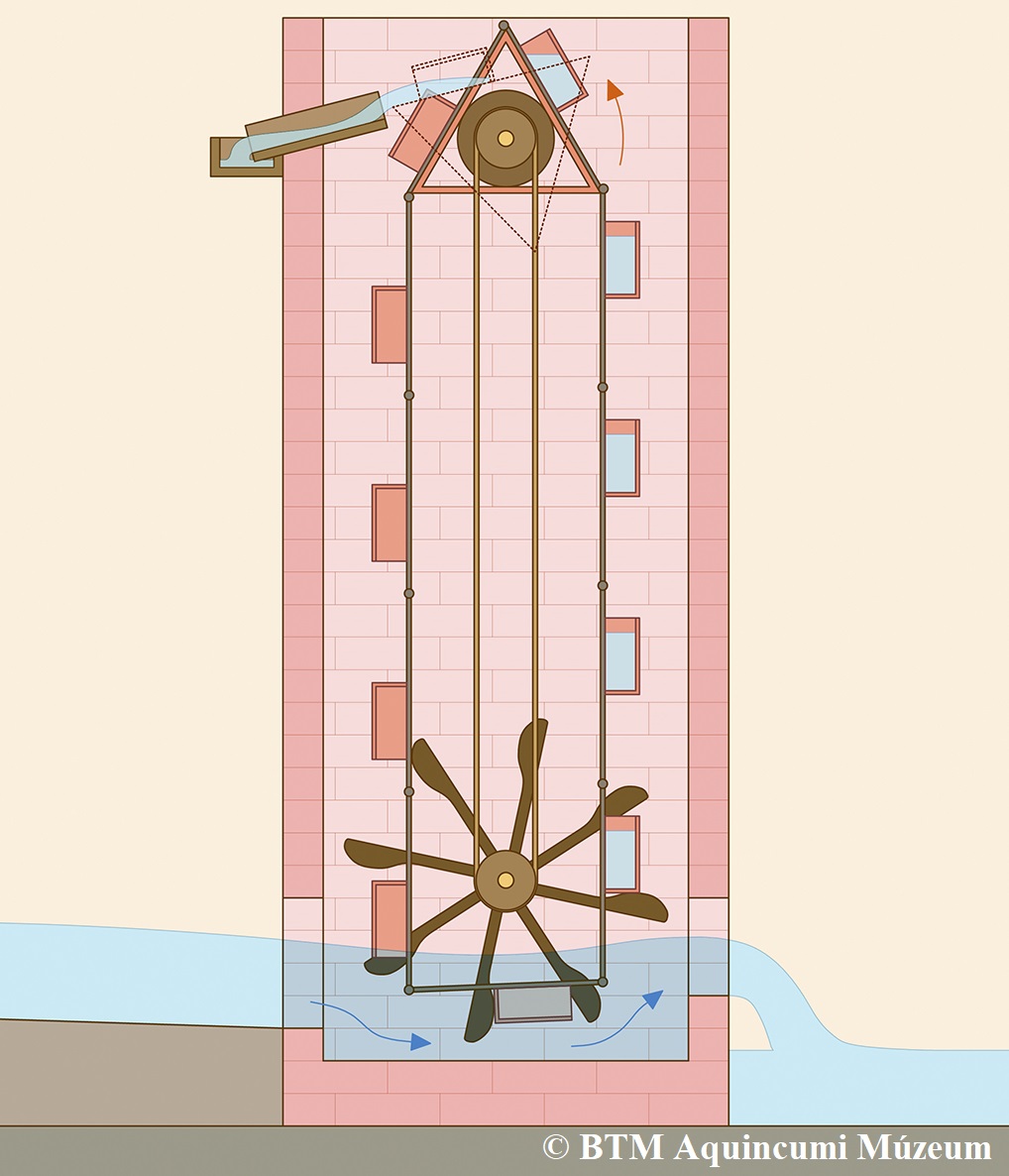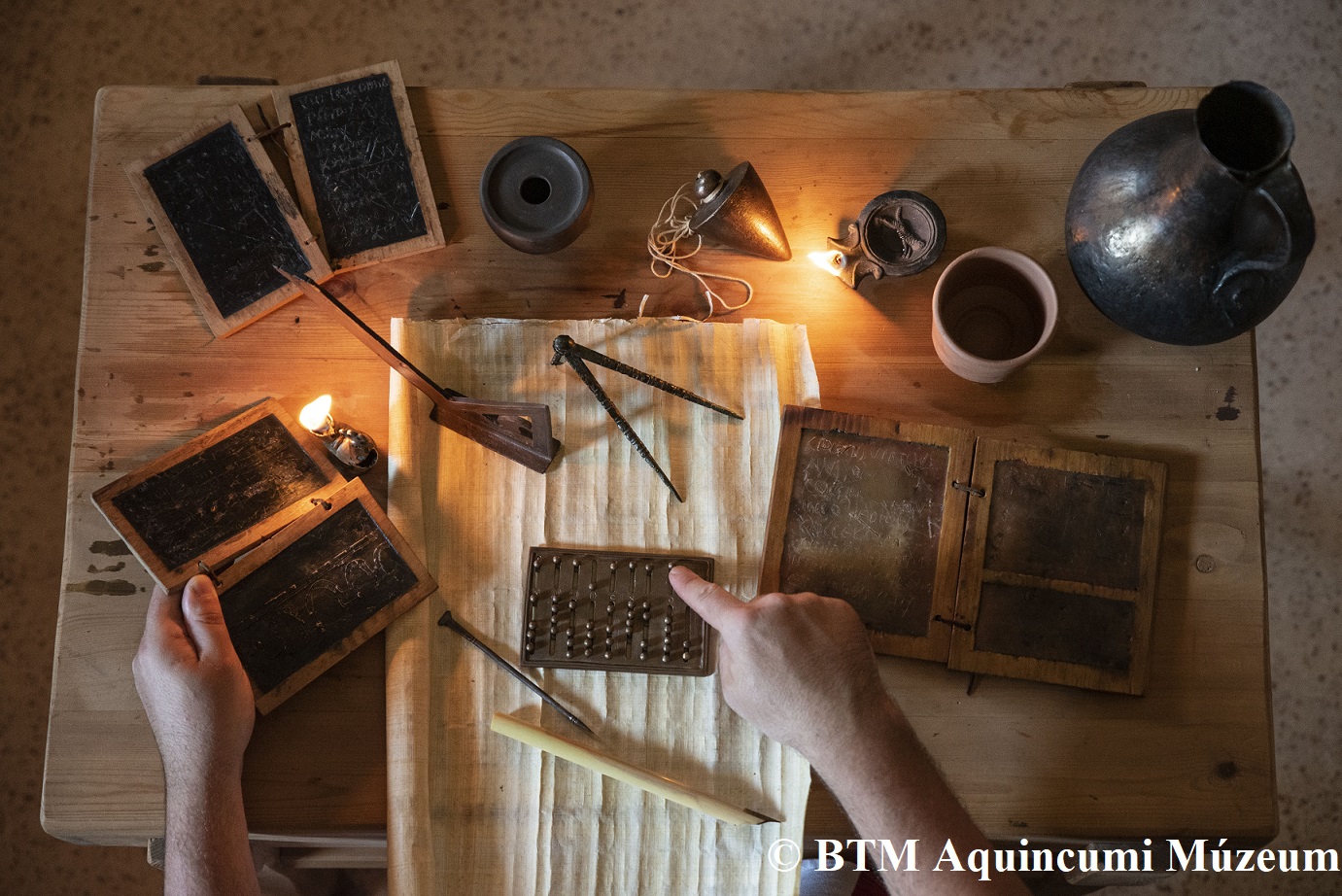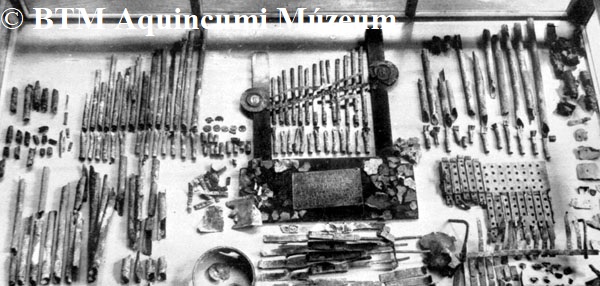The Aquincum Museum’s new temporary exhibition presents an especially fruitful period in Antiquity for the history of technology. Visitors can find out about the ingenious inventions of the age, and the geniuses who created them. Interview with the curator, archaeologist Dr Gabriella Fényes.
In terms of technological history, what have the ancient Greeks and Romans ever done for us?
A lot of things. The aqueducts, the various water-lifting devices are the gift of ancient inventors to the world. Also significant is the hypocaustum underfloor heating, which the Romans believed to be their own invention. Archaeological excavations, however, have shown that its development took place over a long period of time, beginning in the Greek cities of the 3rd and 2nd century BC. A great innovation of the Romans was concrete, which, for instance, made it possible to construct large buildings and cover them with roofs quickly. This led to the widespread use of barrel vaults and domes. The Romans also gave us a state-of-the-art road network. The total length of constructed roads in the Roman Empire of the 2nd century AD is estimated to have reached 80 000 – 100 000 km. At the exhibition, in addition to the Roman ones, we can also find numerous Greek and Hellenistic inventions. The exhibition only covers a fraction of the subject, for lack of space and also since we concentrated chiefly on those inventions, which could be found in Aquincum.

A section of the limes road by the Danube, excavated in Summer 2020 (photograph by Barbara Hajdu)
Are there devices, which we use today, that were originally invented in Antiquity?
There are countless such devices. An example is the pump, invented by Ctesibius and described in great detail by Heron in his book on Pneumatics. They used this during the Middle Ages and the Modern Period as well. The water-lifting device of Buda Castle, too, was a pump of this kind, and until the 19th century fire pumps essentially used to same principle. Another great invention is the Archimedes screw. It is still used in industry up to this day, for instance in Kinderdijk, the Netherlands, for lifting water. In essence, another ‘late descendent’ of the Archimedes screw is the screw propeller. The bucket-chain water-lifting devices – originally invented by Philon – was also used until the 19th century. Bucket-chain conveyors are furthermore still used today for removing the deposits dug up from waterways during dredging.

Bucket-chain water-lifting device (drawing by Tamás Lajtos based on Philon of Byzantium On Pneumatics Chapter 65)
What significant ancient inventions, discoveries were undeservedly forgotten during Antiquity?
There were inventions, which, we could say, were ahead of their time. Of these, perhaps the most interesting is Heron’s aeolipile, in effect, a ball rotated by steam. Many consider it the forerunner of the steam engine, but as a matter of fact, steam was not put to use in Antiquity. Heron describes several little devices, on which a small altar is lit and the expanding air heated by the fire springs the machine into action, which for instance makes figurines offer libations on the altar. If we look closely at the idea behind it, we can see that it lives on in the coffee maker invented by Robert Napier in 1840 and still in use today.
There were also inventions, for which they just had no use in Antiquity. Two anecdotes from ancient authors illustrate this well. Suetonius writes that an inventor once approached Vespasian with a lifting device, which could be used to transport heavy weights quickly and easily. The emperor rewarded the inventor handsomely, but told him that they would not be using his device. The people needed jobs, and the machine would take those away. Petronius writes in his Satyricon that someone came to a different emperor with news that he had invented the unbreakable glass. The emperor asked the man if he had told anyone else about it. When the inventor said no, the emperor had him immediately executed, as he was worried the invention would make the price of gold plummet.
To what extent can we come across the technological innovations of the age in ancient Aquincum?
We can come across them in essentially three categories: the first is water-lifting and water-transportation. The Romans established here an entire system of settlements on the foundation of constant water supply, for which they also provided continuous sewerage. The second is the hypocaustum heating system, and the connected boilers. Such a boiler has only survived at a villa in Boscoreale, Italy, but its traces have also been found here. Definitely Aquincum, too, had state-of-the-art water heating.

The (reconstructed) desk of an ancient engineer (photograph by Nóra Szilágyi)
The third is the objects connected with engineers. These are tools probably used by engineers, e.g. plummets, rulers, compasses, which have also been found – though not in great numbers – in Aquincum. We also have an inscription, which mentions a discens regulatorum (we could translate it as ‘engineer working with a ruler’) by the name of Ulpius Nundinus. He presumably took part in repairing the Aquincum aquaeductus, and as a result set up an altar by the springs at the beginning of the aqueduct. Additionally, we know of several other engineers from Pannonia.
Which ingenious ancient invention is your favourite?
As an Aquincum archaeologist, my favourite is naturally the organ. The organ is an exceptional feat not only in the history music, but also of technology. It was invented by a Ctesibius in the 3rd century, who experimented with various pneumatic devices. One of these was the organ. The Aquincum organ is very special, since this is the only ancient organ, where the whole instrument has survived; though organ parts of various sizes have come to light elsewhere as well.

The remains of the Aquincum organ at its their first exhibition (Aquincum Museum, Photographic Archive)
The organ had several uses in Antiquity. To us the most surprising is that organ music accompanied gladiatorial games. There were also organ concerts in the ancient world, and from the 2nd-3rd century AD they are in all likelihood used during various events, like feasts. The Aquincum organ was the gift of Gaius Julius Viatorinus, who presented it to the association of textile dealers, who were also responsible for firefighting. We may assume that they played the organ at the events of the association to entertain those present. The organ gradually makes its way into the ceremonials at the imperial court, but the organ only becomes a church instrument during the Middle Ages.
Zoltán Quittner
The exhibition “Ingenious inventions – Innovative ideas: Episodes from the history of ancient technology” opened on 31 July 2020 at the Aquincum Museum.
Click here to read the previous entries of the Aquincum Museum’s blog.


